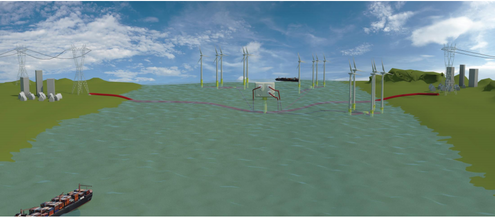Investigation of Multi-terminal HVDC Networks

Project description
Changes in the global energy status quo and the penetration of an increasing amount of renewable energy sources are affecting the shape of the electricity grid. The distance between consumption and generation is continuously increasing, upgrading the role of the transmission system to a critical factor for the future grid realization. This is corroborated by the increasing energy exchange between countries by means of interconnectors. The development of high-voltage components and the inherent advantages of HVdc over HVac, have made it an appealing and economically viable transmission option for long distances. This project focuses on the investigation of multi-terminal HVdc grids, to interconnect offshore wind farms with different national electricity grids. The aim is to study all the critical design parameters to realize a grid with optimal stability, cost and losses.
The key questions to be answered are:
- In which way can we simulate more accurately the dynamic behavior of Multilevel Modular Converter technologies?
- What technical scenarios can there be defined for multi-terminal grid configurations?
- What is their realization timeframe and their relative cost?
- What are the weakest points of each multi-terminal grid configuration?
- What are the necessary technological innovations to handle the identified problems?
- How can we experimentally validate the multi-terminal network operation results obtained from simulations?
- In which way can converters be tapped into the HVdc network?
This project is carried out as part of the ‘Synergies at Sea’ research (SaS), conducted with partners Nuon/Vattenfall, ECN, RUG, Royal Haskoning DHV, Liandon, Energy Solutions, DC Offshore Energy and Grontmij. SaS is closely connected to the objectives of the second Rutte cabinet to generate 16% more sustainably generated energy by 2020.